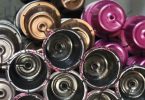More people would be able to access energy-saving techniques if renewables met more of Australia’s power demands, industry experts say.
This morning The Federal Opposition revealed plans to put forward a Renewable Energy Target (RET) of 50% by 2030. The government has condemned it as a return to the unpopular Emissions Trading Scheme policy of the last Labor government, but sustainable energy professionals have praised the move.
“Ambitious policies will enable Australian communities and households to more proactively engage in their energy future, and also engage in a way that addresses climate change” says Nicky Ison.
Ms. Ison is the Secretariat of the Coalition for Community Energy (C4CE), a group of 57 organisations aimed at developing energy sources owned and operated by communities.
She says new business models based around renewable energy like the ones she oversees will be in higher demand in Australia, and thus more financially viable, as a result of higher RET.
“One of the things we’re seeing worldwide is innovation in new business models for energy consumption. Business models that haven’t yet been able to invest in renewable energy to benefit from it – particularly young renters and apartment dwellers.”
“For example, in the US, we have recently seen a lot of investment in shared ownership of solar panels. That works when a community energy enterprise sets up a solar system on the roofs of people who can’t afford the full cost of a solar system. They can then buy into it and fund it based on how much of its electricity you use.”
Associate Professor Mark Diesendorf from UNSW, says an ambitious energy target will also lead to lower power bills in the long term.
“As more renewable energy enters the power grid, it actually decreases the price of wholesale electricity,” Mr. Diesendorf explains. “It’ would then be up to the government to make sure these decreases in wholesale electricity prices are passed on”.
Mr. Diesendorf, who is researching how renewables could supply 100% of Australia’s electricity demand, encourages young people to consider investing in energy-saving means in their future.
“Solar panels are now cheap enough that provided you’re not using electricity during the day, it’s cost effective to put solar on your roof just to avoid buying electricity.”
“They cost about 12 or 15 cents kw/h to run, whereas buying electricity from the grid costs 30 or 35c an hour. So even if you don’t get reimbursed for feeding power back into grid – even if you can just avoid buying from grid – you’ll save money.”







